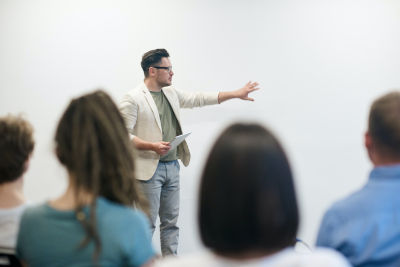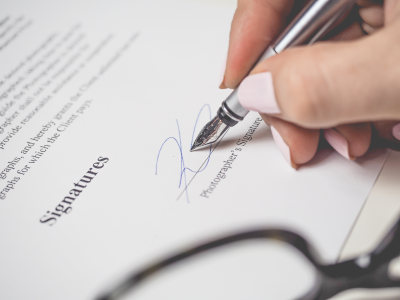Using the work of others
Fact sheet P-27
Issued: November 2009 Last Amended: 22nd June 2022
Fact sheet P-27: Using the work of others
- Scope

This factsheet deals with the rules applied under UK law namely the Copyright, Designs and Patents Act. Although the principals of copyright protection are largely consistent across the world specific details may vary outside the UK due to national legislation.
- Rights of the copyright owner
Copyright is an automatic international right that gives the creators of literary, dramatic, musical and artistic works the right to control the ways in which their material may be used.
The rights cover: Broadcast and public performance, copying, adapting, issuing, renting and lending copies to the public. In many cases, the creator will also have the right to be identified as the author and to object to derogatory treatment and distortions of their work.
For an introduction to copyright and the rights of copyright owners, please see factsheet P-01: UK Copyright Law.
- Respecting the rights of others
Illegal or unauthorised use of copyright material may lead to legal action or in some cases even criminal charges. It is your responsibility to ensure that you respect the rights of others and only use their work when it is correct to do so.
- Using the work of others
You may use the work of others if:
- Copyright has expired.
- Your use of the work is fair dealing as defined under the 1988 Copyright Designs and Patents Act (UK).
- Your use of the work is covered under a licensing scheme that you have subscribed to and the copyright holder is a member of.
- The copyright holder has given you permission.
- Licensing schemes
There are a number of agencies that operate licensing schemes and collect royalties on behalf of copyright owners, the most notable are:
- Copyright Licensing Agency (CLA)
The Copyright Licensing Agency provides licenses for organisations, such as schools and libraries, to copy extracts from print and digital publications. There are several different licences (photocopying, scanning, electronic reproduction, etc.).
State schools may be able to obtain CLA licences via their local education authority if the authority is a CLA agent.
- Educational Recording Agency (ERA)
The Educational Recording Agency operates a licensing scheme enabling educational use of copyright protected material from radio and television programmes.
- The Design and Artists Copyright Society (DACS)
The Design and Artists Copyright Society operates a licensing scheme and on behalf of artists and visual creators.
- Copyright Licensing Agency (CLA)
- What is fair dealing?

Fair dealing is a term used to describe some limited activities that are allowed without infringing copyright. Briefly these are as follows:
- Research and private study
Copying parts of a literary, dramatic, musical or artistic work or of a typographical arrangement of a published edition for the purpose of research or private study is allowed under the following conditions:
- The copy is made for the purposes of research or private study.
- The copy is made for non-commercial purposes.
- The source of the material is acknowledged.
- The person making the copy does not make copies of the material available for a number of people.
- Instruction or examination
Copying parts of a literary, dramatic, musical or artistic work or a sound recording, film or broadcast for the purpose of instruction or examination is allowed under the following conditions:
- The copying is done by the student or the person giving instruction.
- The copying is not done via a reprographic process.
- The source of the material is acknowledged.
- The instruction is for a non-commercial purpose.
- Criticism or review
Quoting parts of a work for the purpose of criticism or review is permitted provided that:
- The work has been made available to the public.
- The source of the material is acknowledged.
- The material quoted must be accompanied by some actual discussion or assessment (to warrant the criticism or review classification).
- The amount of the material quoted is no more than is necessary for the purpose of the review.
- News reporting
Using material for the purpose of reporting current events is permitted provided that:
- The work is not a photograph.
- The source of the material is acknowledged.
- The amount of the material quoted is no more than is necessary for the purpose.
- Incidental inclusion
Incidental inclusion is where part of one work is unintentionally included in another. The incidental inclusion of a work in an artistic work, sound recording, film or broadcast is not an infringement.
A typical example of this would be a case where a someone filming inadvertently captured part of a copyright work, such as some background music, or a poster that just happened to on a wall in the background.
- Accessibility for someone with a visual impairment
It is considered fair dealing to make an accessible copy of a work for someone with a visual impairment if a suitable accessible version is not already available.
- Parody or pastiche
There are exceptions in the law to permit limited use of a copyright work to make a parody or pastiche of the work without the need to seek permission. This should however be treated with caution, as at this stage there is not much guidance or case law rulings to follow. The IPO guidance states that the use must be “fair and proportionate” and, of course, this exception does not limit other rights the author may have (for example to object to defamatory or derogatory treatment).
For further details on UK fair dealing rules please refer to the Copyright Designs and Patents Act; Section 28 onward covers this area in full.
Those outside the UK should consult the fair dealing / fair use sections of their own national legislation.
- Research and private study
- Duration of copyright
The 1988 Copyright, Designs and Patents Act states the duration of copyright as;
* In the case of work created on behalf of a company the duration is still linked to the individual person that created the work.
Guidance issued by the UK Government states that “An employer should keep careful records of which person(s) created the work for them and any contractual agreements which were in force. The period of copyright protection will usually still be linked to the date of the death of the creator(s) - that is the employee(s).”- For literary, dramatic, musical or artistic works
70 years from the end of the calendar year in which the last remaining author of the work dies.*
If the author is unknown, copyright will last for 70 years from end of the calendar year in which the work was created, although if it is made available to the public during that time, (by publication, authorised performance, broadcast, exhibition, etc.), then the duration will be 70 years from the end of the year that the work was first made available.
- Sound Recordings
50 years from the end of the calendar year in which the work was created, or,
if the work is released within that time: 70 years from the end of the calendar year in which the work was first released.
- Films
70 years from the end of the calendar year in which the last principal director, author or composer dies.*
If the work is of unknown authorship: 70 years from end of the calendar year of creation, or if made available to the public in that time, 70 years from the end of the year the film was first made available.
- Typographical arrangement of published editions
25 years from the end of the calendar year in which the work was first published.
- Broadcasts and cable programmes
50 years from the end of the calendar year in which the broadcast was made.
- Crown Copyright
Crown copyright will exist in works made by an officer of the Crown, this includes items such as legislation and documents and reports produced by government bodies.
Crown Copyright will last for a period of 125 years from the end of the calendar year in which the work was made.
If the work was commercially published within 75 years of the end of the calendar year in which it was made, Crown copyright will last for 50 years from the end of the calendar year in which it was published.
- Parliamentary Copyright
Parliamentary Copyright will apply to work that is made by or under the direction or control of the House of Commons or the House of Lords and will last until 50 years from the end of the calendar year in which the work was made.
- For literary, dramatic, musical or artistic works
- Obtaining Permission

If you are not sure if your use is fair dealing or covered under a licensing scheme always check with the publisher/copyright owner and obtain permission if needed.
When obtaining permission to use a copyright work it is normally best to contact the publisher. In some cases the publisher may be able to act on the copyright owners behalf, alternatively they may direct you to the appropriate licensing organisation or pass your request on to the copyright owner directly. In the case of material published on the Internet the best place to start is normally by contacting the web site owner.
When seeking permission, you should put your request in writing and specify:
- The material you wish use (include the title of publication, author name etc.).
- The exact content to be duplicated (i.e. page numbers, section names, etc.).
- The number of copies you wish to make.
- How the copies will be used (i.e. for an event, course work, etc.).
- Who the copies will be distributed to (i.e. students , parents, general public).
You should allow adequate time for the copyright owner to provide permission. Also bear in mind that the copyright owner is not required to give permission and may refuse or simply not respond to your request.
For your own reference and security permission should be obtained in writing and you should keep a record of any correspondence giving permission or stipulating conditions of use.
- Common questions
- Copyright and the Internet
Material that can be found on the Internet will of course also be subject to copyright. There are a number of licensing schemes that are popular with online publication and allow some free (normally non-commercial) use, the most notable being GPL and Creative Commons.
If you are making/distributing copies of work that you find on the Internet you should check that the licence for the work (or instructions on the site) allow this and that the site you obtained the work from is itself acting legally. If there is no such licence, do not use the work until you have the permission of the copyright owner.
- What if the copyright owner does not answer my request for permission?
If this is the case you have not obtained permission and should not use the work.
-
What if I can’t locate the copyright owner?
If you have made reasonable efforts and still cannot trace the copyright owner then, within certain jurisdictions, it is possible to apply for a licence from the government on the grounds that this is an orphaned work.
For more information, please see our fact sheet P-13: Obtaining permission. - How much of a work can I use under fair dealing?
There is no simple formula or percentage that can be applied. You may have seen figures like ‘up to 10%’ or ‘no more than 400 words’ quoted in some publications, but such figures are at best a rough guide and can be misleading. What is acceptable will vary from one work to another.
In cases that have come to trial what is clear is that it is the perceived importance of the copied content rather than simply the quantity that counts. Judges hearing such cases often have to make an objective decision on whether the use is justified or excessive.
- Who is the copyright owner of student created work?
As a student is not an employee of the school/college/university/(etc.) by default the copyright in any work the student produces will belong to the student.
Naturally this will change if the student enters into an agreement to the contrary. For example if the work has been sponsored by a commercial organisation or as part of a work experience program there may be a contractual agreement that covers intellectual property created as part of that project.
- Copyright and the Internet

This fact sheet is Copyright © Copyright Witness and protected under UK and international law.
The use of this fact sheet is covered by the conditions of a Creative Commons Attribution-Non-Commercial-No Derivative Works License.
This fact sheet is intended only as an introduction to ideas and concepts only. It should not be treated as a definitive guide, nor should it be considered to cover every area of concern, or be regarded as legal advice.
